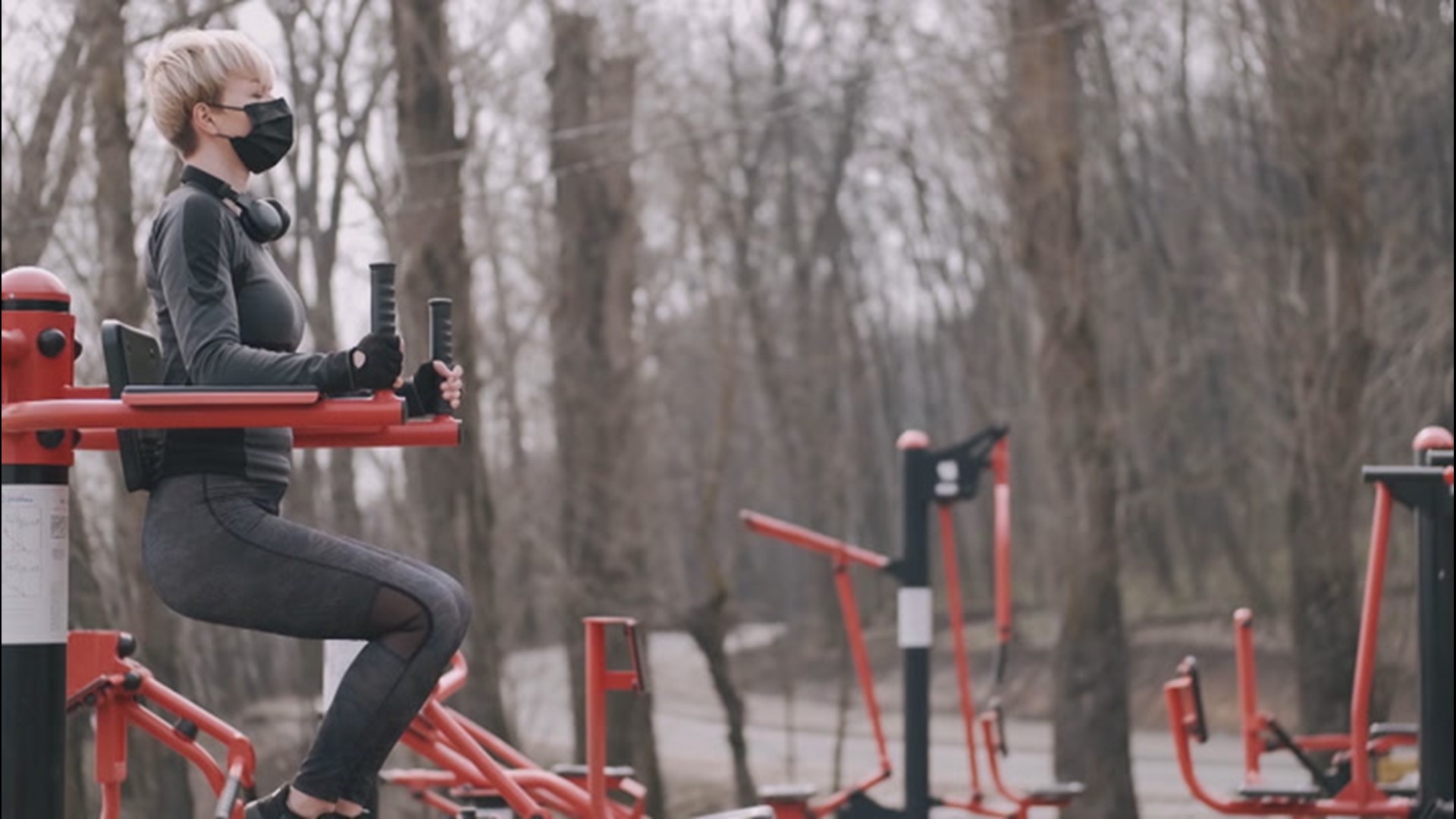As the coronavirus pandemic persists across the world, wearing face masks has become the new normal. Glasses wearers, however, have had to adapt to the dreaded consequence of wearing a mask and glasses at the same time: The lenses fog up. And outside in the cold weather, that nuisance is amplified.
When hot air hits a cold surface -- in this case, the wearer's breath hitting the lenses of the glasses -- condensation forms on the surface. According to the Cleveland Clinic, the effect can happen easily, just from walking into a warm building after being in the cold outdoors while wearing glasses.
When wearing a mask, the condensation is seemingly inescapable because the hot air from a person's breath is only able to escape upwards into the glasses.
"Since condensation is a function of temperature, the colder the glasses the more the condensation," AccuWeather Senior Meteorologist Bob Smerbeck said. "One thing you can do is try to warm up your glasses before entering a building -- but watch where you are walking. Scratches and smudges can increase condensation, so make sure your glasses are clean."
While the issue of glasses and masks is a new one for many people, one group has been dealing with it for a long time -- medical workers.
Neysa Ernst, a nurse manager in the Department of Medicine at Johns Hopkins University Hospital in Baltimore, said that fogging glasses have always been an issue for people who work in the medical field, and plenty of solutions have been tried to neutralize the nuisance.
If contact lenses are out of the question, here are a few cheap and easy ways to put an end to foggy glasses.
Ernst does not wear glasses to work herself, but a handful of the nurses she works with do, and they have come up with a simple and accessible solution using a common household item.
"Some of the staff has talked about using Dawn dish soap, and cleaning their glasses with Dawn dish soap," Ernst told AccuWeather.
Ernst said she has never tried it herself, but has heard of the solution multiple times across her staff.
According to AARP, the Annals of the Royal College of Surgeons of England published an article in 2011 that explains how the soap and water method can prevent fogging.
"Immediately before wearing a face mask, wash the spectacles with soapy water and shake off the excess," the researchers wrote. "Then, let the spectacles air dry or gently dry off the lenses with a soft tissue before putting them back on. Now the spectacle lenses should not mist up when the face mask is worn."
Another common household item -- shaving cream -- has also been called a solution to foggy lenses. According to Fitz Frames, shaving cream is a great moisture repellent and can create a barrier against any condensation forming on the lenses of a pair of glasses, as well as other glass surfaces prone to fogging, such as your car windshield.
AccuWeather tried the method with shaving butter, shaving gel and shaving cream products, which involved dabbing some shaving cream on the lenses and then wiping with a dry towel. The results were mixed, but largely disappointing.
The original shaving cream formula did not work well, and within a few minutes, the glasses had fogged up. The shaving butter formula also did not work at all. The shaving gel reduced fogging, but not entirely. The condensation on the glasses was less thick with the gel than without any product at all. This method may be better for making your glasses smell nice than to actually defog them.
If you are willing to invest a little bit of money into a solution, anti-fogging sprays and wipes may do the trick. Online, the products are relatively inexpensive and can be purchased for under $10. They can typically last long enough to require being used only once daily for the desired results against light fogging.
Edward Johnston, a registered nurse at Johns Hopkins University Hospital, uses Fog Gone spray, which can be purchased on Amazon or Etsy for $10-20, depending on the size of the bottle. He said he just sprays the Fog Gone on his face shield at work, waits for it to dry a little and then wipes it off. The product lasts a few days for him. Johnston told AccuWeather that he thinks Fog Gone is more effective than the dish soap trick, although some of his co-workers choose to use the soap method anyway. He said he has also heard of someone using Pam cooking spray as a solution. (AccuWeather didn't test out that method.)
"Everyone comes up with their own tricks of the trade so to speak," Johnston said. "I was on a disaster team and we had gas masks, and I used something similar to [Fog Gone] on the gas mask we were given."
If all else fails, using tape to hold down the mask could be a last resort. Sports tape or medical tape can be used as a last-ditch effort to prevent fogging by holding the mask down against the nose and cheeks to cut off the hot air from inside the mask from rising into the glasses. If you are going to attempt this method, only use tape that is designed to go on skin, not duct tape. There are even some options of tape made specifically for sensitive skin, as well.
"It's whatever works for you," Johnston said of the many available methods. "If it works for you, use it."
No matter what the solution, Ernst emphasized the importance of wearing a mask during the pandemic.
She explained that officials at the hospital perform contact tracing whenever a staff member is infected, and when personal protective equipment is used properly, very few infections are transmitted from patients to staff.
"Whatever you can put between you and the bug, you want to do that," Johnston advised.

